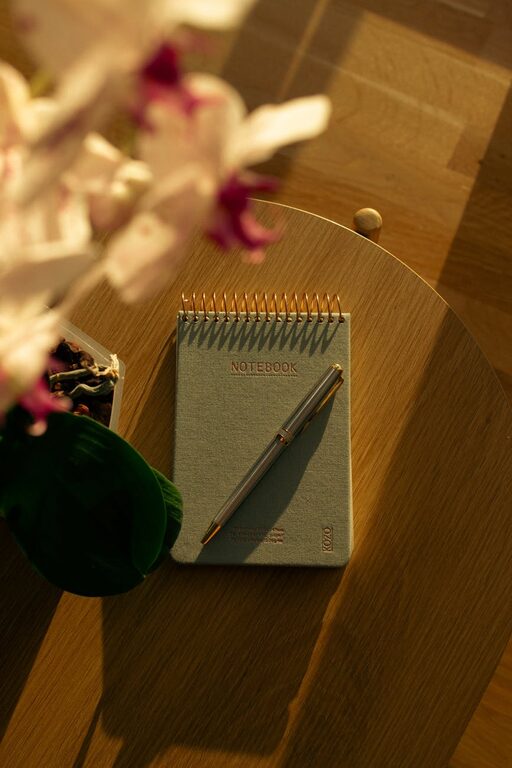Choosing the right notebook might seem simple, but finding one you’ll actually use regularly takes a bit more thought. Whether you want it for note-taking, journaling, planning, or creative writing, the perfect notebook can motivate you to stay organized and capture your ideas effectively. This guide will help you understand the key factors to consider before buying your next notebook, so you pick one that fits your lifestyle and preferences.
Why Choosing the Right Notebook Matters
A notebook can be much more than just paper bound together. It’s a tool that can help boost your productivity, spark creativity, and keep your daily thoughts and tasks in order. However, if the notebook you pick doesn’t feel right, you might leave it untouched or feel frustrated using it. The goal is to find a notebook that feels inviting and matches how you plan to use it.
Consider Your Intended Use
Before looking at styles and features, think about what you want from your notebook:
– Journaling or personal reflection: You might prefer a notebook with a soft cover and smooth paper that’s pleasant for writing.
– Note-taking for work or school: Something durable with organizational tools like numbered pages or pre-made sections can be helpful.
– Creative writing or sketching: You’ll want high-quality paper that handles ink well and can accommodate sketches or doodles.
– Planning and goal tracking: A notebook with a calendar layout, dot grid, or planner templates would suit your needs.
Knowing your primary use will narrow down the options significantly.
Size and Portability
Notebooks come in a variety of sizes, from pocket-sized to large sketchbooks. Here’s what to think about:
– Portability: If you carry your notebook everywhere, a smaller size like A5 or pocket-sized might be best.
– Writing space: If you brainstorm or write lengthy notes, a larger size such as A4 provides more room.
– Storage: Consider where you’ll keep it; large notebooks can be bulky and harder to store.
Try holding a few sizes in your hands to see what feels comfortable for your daily routine.
Paper Quality and Type
Paper quality dramatically affects your writing experience:
– Weight (gsm): Heavier paper (80-100gsm or more) prevents ink bleed-through and feels nicer to write on.
– Texture: Smooth paper is best for fountain pens and fine liners, while more textured paper suits pencil and charcoal.
– Color: Some prefer bright white, others natural/off-white — consider what is easiest on your eyes.
– Ruling: Choose from lined, dotted, grid, or blank pages depending on your writing or drawing style.
If you use specific pens or markers, test them on sample paper to avoid disappointment.
Binding Style
The way a notebook is bound affects durability and usability:
– Spiral binding: Lies flat when open, great for note-taking, but the spiral can get bent or catch on things.
– Thread binding (sewn): Durable and often allows the notebook to lay flat, ideal for frequent use.
– Glue binding (perfect bound): Sleek look but may not open flat easily.
– Hardcover vs softcover: Hardcovers protect your pages better, while softcovers are lighter and more flexible.
Choose a binding that fits how rough or gentle you’ll be with the notebook.
Cover Design and Material
A visually pleasing notebook encourages regular use:
– Material: Leather, faux leather, fabric, or cardboard covers all offer different feels and durability.
– Design: Some prefer minimalist styles; others want art, patterns, or inspirational quotes.
– Personalization: Some brands offer customization with your name, initials, or custom artwork.
Don’t underestimate the power of a cover that makes you excited to write.
Additional Features to Look For
Some notebooks come with extras that can enhance your experience:
– Page numbers and index: Useful for organizing notes.
– Pockets: Keep loose papers or stickers.
– Pen loop: Always have a pen handy.
– Elastic closure: Keeps notebook secure in a bag.
– Ribbon bookmark: Easily return to your current page.
Think about which features will support your workflow.
Budget Considerations
Notebooks vary widely in price. While expensive notebooks often use better paper and materials, there are great budget-friendly options. To get the best value:
– Buy one notebook at first and test it out.
– Consider how often you will use it.
– Remember that a more durable notebook may last longer and reduce replacement costs.
Try Before You Buy
If possible, visit a stationery store to flip through notebooks. Feel the paper, open each one, and imagine how it would suit your needs. If buying online, look for reviews that mention the quality and user experience.
Conclusion
Choosing a notebook is a personal decision that depends on your individual needs, writing habits, and style preferences. By considering the notebook’s purpose, size, paper quality, binding, and additional features, you’ll find one that you genuinely enjoy using every day. The right notebook can help turn your ideas into action and make writing something to look forward to.
Happy notebook hunting!



